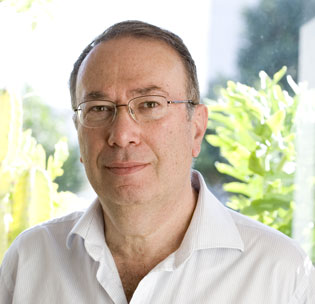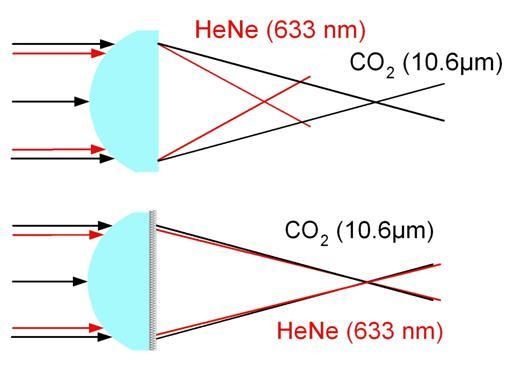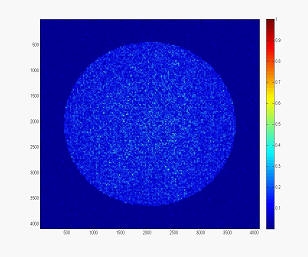We are glad to interview the Founder of Holo-Or, Israel Grossinger, who continues to be its general manager, in honor of the 20th anniversary of Holo-Or.
How did it all start?
20 years ago one could see a lot of activity in the research institutes, but there was no company that actually offered diffractive optical elements (DOEs) on a commercial basis. I saw potential in telecommunication and medical laser optics. We arranged to offer a WDM module to the telecom network designers. Soon afterwards we came to Coherent Medical, the leader in Medical Laser systems in those days. They were interested to enter this field and also looked to academic institutes like MIT that did work in this field. Eventually Coherent decided to team up with us, as we had advanced designs and manufacturing and we were prepared as well to establish a normal commercial relationship with them. I also had served as the VP R&D of Indigo (that has been sold later to HP) at this level of commerce. So this was a good fit. Coherent was very glad to try our new designs and even asked us to copy one by one our production facilities.

Picture of Israel Grossinger Founder of Holo/Or.
What was the first product of Holo-Or?
Actually our Holo-Fractive and Dual Wavelength lenses were the first diffractive optical elements sold on a commercial basis in the world. The Holo-fractive lenses correct the spherical aberrations with a diffractive surface to diffraction limited spot size, and also allow getting the same spot size at a larger working distance, and suffer less back-scattering. The Dual wavelength lens corrects the strong chromatic aberrations between a CO2 laser and its Red aiming beam. This is still a very popular element that we sell for use in surgical laser systems and FTIR systems.

Fig 1. Dual Wavelength Lens, are still used in Surgical Laser systems.
What other developments have you been strongly involved with over the years?
We had a contribution to a variety of fields. Many times these included diffractive optical technologies, but sometimes we did the design and the development as subcontractors for creating conventional optical systems. It is worth mentioning here contact lenses, IOL (Intra Ocular Lenses), Fundus cameras, hair coloring diagnostic and guiding systems, portable scanners, camera pill, aesthetic laser treatment, and many more projects, and products.
What are the most popular products today?
We have a lot of activity today in Homogenizers/Diffusers/Beam-Shapers. The customers get with their laser a spot that is normally not optimal for the application. With our optics we then make the spot more uniform or modify the spot size. If they have high power lasers they know they need a solution from Holo-Or that uses pure Fused Silica or ZnSe but at reasonable prices. They want to make their system more efficient, so they get our elements that put 75-95% of of their laser energy where they want it.
Fig. 2. A High efficiency Round Diffuser with 90% in the desired spot.
Another family that is getting more and more popular is the 1-D and the 2-D multi-spots. Here the customer creates a number of points from one laser close to each other. Most of these are a way to get a higher throughput; this can be for perforation, or Skin-Resurfacing, Automatic optical inspection or other applications. Also here the customer asks for high efficiency, high damage threshold and to get as much energy as possible in the desired spots.
How do you position yourself between your competitors?
We have probably the widest collection of high power diffractive optical elements (DOE’s) available, one can find at www.holoor.co.il . So the customer normally doesn’t need to pay NRE even for a job that looks very special. On top of that we keep the NRE prices very low, so even if a new design is required the customer will get this from us at only a fraction of the cost of the price our competitors ask. Furthermore, we take care to give fast, detailed and accurate responses to the questions and concerns of the customer. I think that our customers feel our concern for their projects to succeed, and will alert them for problems even before they see them many times, and, last but not least, we are after the most mature DOE manufacturer and have built our reputation and customer base over the years.
Where do you see Holo-Or and Diffractive Optical Elements in 10 years from now?
We look into new applications like Solar Energy and communications. I trust either we or other DOE companies will start playing a larger role here.
In the more immediate future we wish to climb higher in the food chain. So you will see soon sub-systems from us, where we integrate our elements together with more optics and/or lasers.
Together with that we keep developing new elements like Vortex Lenses or a type of Homogenized Splitter, and are always open to hear from our customers where they wish us to assist them.
How do you celebrate 20 years Holo-Or?
As we wish to celebrate with our customers we decided to lower the price for any order received between April 1st and June 20th 2009 with a minimum of 10% and an average of 20% depending on the type of products, some having up till 50% discount.



